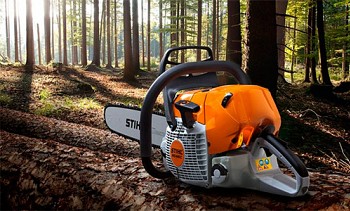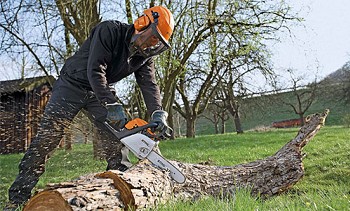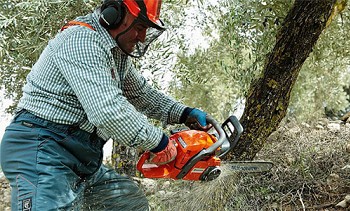Which is better - chainsaw or chain saw
Among the tools for woodworking, chain saws are one of the most common. This is determined by their performance, compactness, and relatively low cost of consumables. In practice, only an endless gear chain interacts with a tree, the resource of which is quite high, and only periodic sharpening is required from maintenance.
There are two types of chainsaws - gasoline and electric. The former drive the saw chain with the help of a two-stroke petrol air-cooled engine with a power of 1.5 - 5 kW, the latter - an electric motor with a power of up to 2.5 kW. If we compare the fuel and electricity consumption, then for gasoline and electric saws, the monetary cost of sawing 1 m3 material will be approximately the same.
But to determine what is better than a chainsaw or electric saw, it is necessary based on a set of characteristics, and not just the cost of fuel or electricity. The costs of purchase, maintenance, ergonomics, maintainability and ease of use are no less important factors influencing the choice.
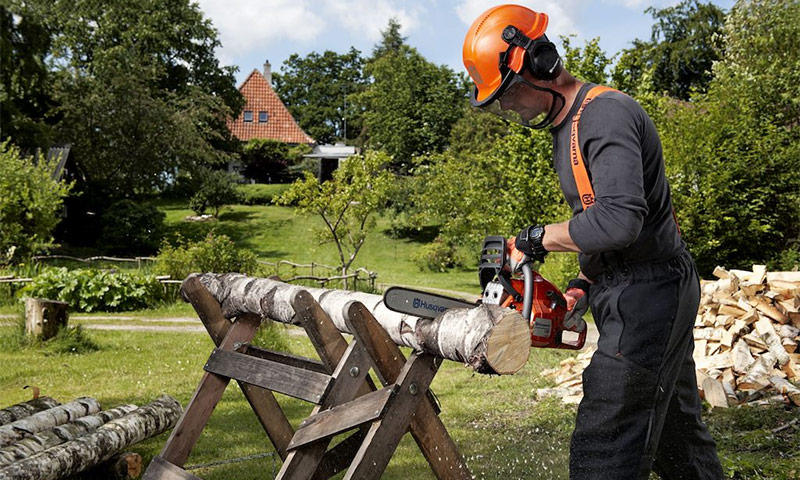
Content:
Design features of electric and gasoline chain saws
Chainsaw device
The base unit of the chainsaw is a high-speed engine (12 - 14,000 rpm), with a volume of 40 - 60 cm3. A feature of such a motor is that gasoline of the A92 or AI95 brand is mixed with special oil immediately before refueling the tank. If you refuel the chainsaw with clean gasoline, the engine will fail several seconds after starting.
With engine blocked:
- centrifugal clutch;
- drive sprocket;
- the tire;
- chain oil pump;
- brake.
The engine is started by a manual starter (cord). The chainsaw handle is equipped with an anti-vibration mechanism and special inertial protection - when the saw chain is jammed, it can be thrown back, there is a real possibility of injury to the saw. When in contact with the operator’s hand, the protective arc instantly stops the engine and eliminates the possibility of damage by the rotating chain.
Chains for saws are used in several types, for their selection the classification is most often used in steps - the distance between the lower teeth that mesh with the drive sprocket.
The chain thickness is in the range 1.3 - 1.6 mm. For household and semi-professional saws, chains up to 1.45 mm thick are sufficient; for professional saws used in felling, chains with a thickness of 1.5 - 1.6 mm are required.
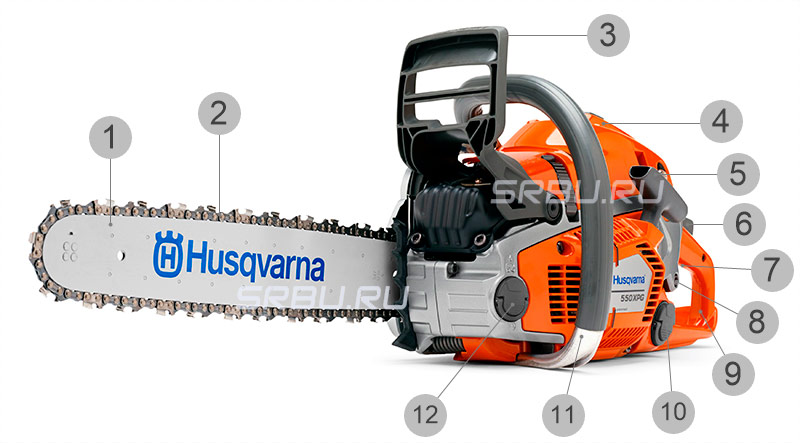
1. The tire.
2. Chain.
3. Inertial chain brake.
4. Cylinder cover.
5. Starter handle
6. Safety trigger.
7. Trigger gas.
8. Throttle lever
9. Rear handle
10. Oil tank cap.
11. Front handle
12. Fuel cap.
Chain saw device
Saw headset electric saw device is similar to a chainsaw. But in an electric saw, as a rule, there is no clutch, instead a soft start button is provided. In many cases, this is completely insufficient - the idle mode when the engine is running, but the chain does not move, is more convenient and safe.
In terms of engine power, electric saws are significantly inferior to gasoline ones - the maximum power does not exceed 2.5 kW. Attempts to create more powerful electric saws were unsuccessful - the mass of the engine and the energy consumption sharply increase, which affects both the convenience of the tool and its cost.
A protective arc, in most cases, is on each electric saw and works on the same principle as on a gasoline one. An oil pump is also present - often pumps of the same model are installed on electric saws as on chainsaws. They provide chain and tire lubrication in all operating modes. The oil flow rate depends on the speed of the chain.
It is worth noting that one of the main errors of users of electric saws is hidden here. If in a chainsaw oil is poured into the pump tank at each refueling, then when operating a chainsaw, this is often forgotten. This leads to quick wear of the saw set and frequent replacement of chains and tires.
There is an erroneous opinion that on electric saws the chain and the tire wear out faster due to low revs. If the oil is filled in time, then the resource of the saw set is the same in both cases. Only the performance depends on the speed.

1. Lever.
2. Electric motor
3. Oil tank plug.
4. Inertial Chain Brake
5. The tire.
6. Chain.
7. Tire and chain tensioning screw.
The difference in power, performance, saw headset and price
Power and performance
As already mentioned, the power of electric saw engines rarely exceeds 2.5 kW, and for chainsaws it can reach 5 - 6 kW. But even an electric saw of 2.5 kW can not be compared in performance with a gasoline of similar power. The fact is that an electric saw with an average load can work continuously for up to 40 minutes, after which it must be turned off for 20 minutes so that the motor cools.
Chainsaws do not have such a problem, if you do not take into account cheap tools at the household level. Semi-professional and industrial do not require such stops and can work 8 hours a day with virtually no stop. Time for refueling and oil does not count - this operation takes several minutes. It is worth considering that oil is also poured into electric saws.
The chainsaw chain speed is 25-30% higher than the electric chain. Accordingly, productivity increases as much. Given the possibility of the operator quickly moving with a chainsaw along a construction site or along a board or log, which is difficult for the electric saw to have a cable, productivity increases even more. If you compare a chainsaw and an electric saw of the same power, then the performance of a gasoline is slightly higher.
Saw headset
Equipped with electric and gasoline saws with the same saw set, with chains of the same pitch and tooth profile. But the length of the tire, and, accordingly, the number of teeth on the chain, are different. Chainsaws are equipped with tires from 35 cm to 1 m long, depending on engine power. Electric saws are equipped with tires no more than 0.5 - 0.6 m.
But this parameter is not as important as it might seem. It is correct to compare only saws of the same power, and chainsaws with 2.4-3 kW motors rarely have a tire longer than 0.5 m. So, the tools are approximately equal in this parameter. At logging sites, where saws with meter tires are required, electric saws do not work, therefore, they should not be compared.
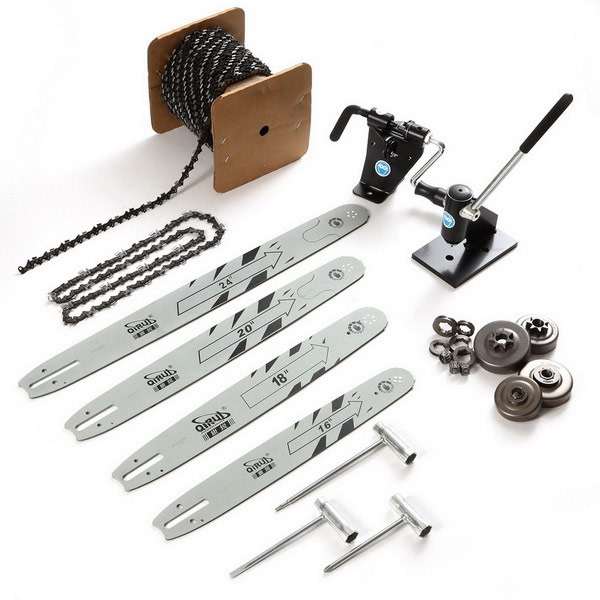
Price
When choosing a chainsaw and electric saw, price does not play a decisive role. Much more important is the performance. But if you take semi-professional saws, for example, a STIHL 180 chainsaw and a Makita UC4020A electric saw (comparable power of 1.5 and 1.8 kW), then the price of an electric saw is almost 40% lower than a gasoline one.
Complexity of maintenance and use
Preparation for work and service
Electric saws are more convenient when preparing for work. It is enough to install the saw headset, add oil and plug in the socket. At the same time, most high-quality electric saws are equipped with quick-clamping devices that allow you to tighten the chain or replace it in a few minutes.
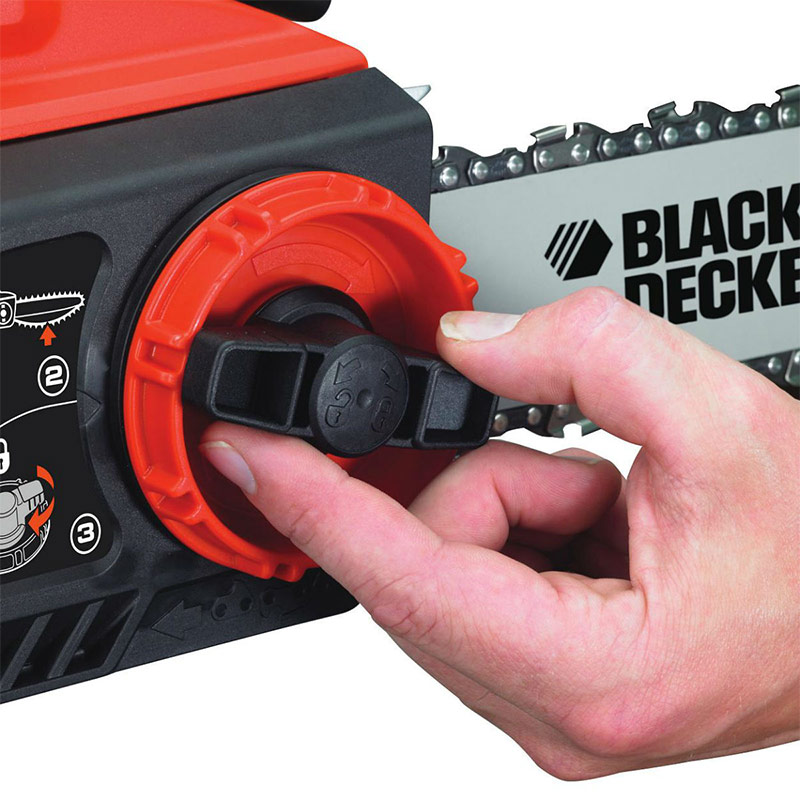
Keyless chain tensioner.
Chainsaws are more complicated with this - semi-professional and professional saws are equipped with traditional nut clamps that cannot be dismantled without a key. And the chain is lifted using a screwdriver or a special hex key.This takes a little longer, but also holds the settings guaranteed tightly.
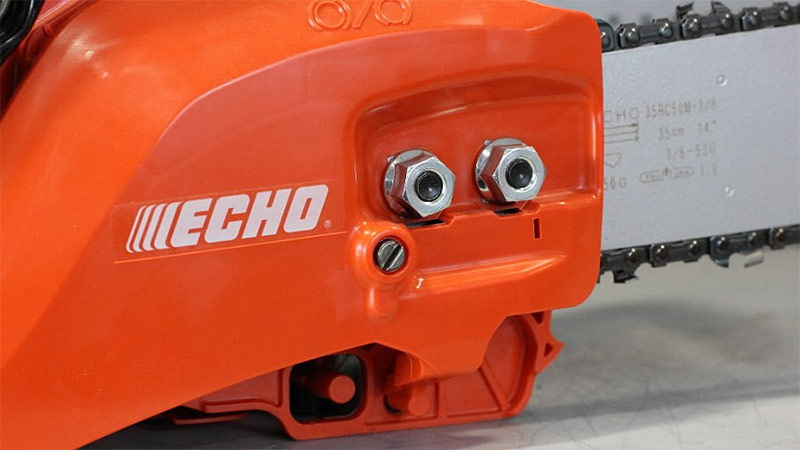
Normal chain tensioner.
The preparation of the fuel mixture for a chainsaw takes several minutes - special tanks with graduation allow you to mix gasoline and oil in a given proportion in any quantity. As a rule, one tank refueling is enough for 40 - 50 minutes of work. Having prepared 2-3 liters of fuel in the morning, you will be provided with it for a whole working day. Harvesting the mixture for the future, for several days, should not, with prolonged storage, its properties deteriorate.
Comfort of use
An electric saw does not require a fuel mixture. To start sawing, just insert the plug into the outlet and press the button.
However, if chainsaws are perfectly balanced and it is very convenient to hold them in your hands, then dealing with electric saws is more complicated. In addition, which is quite noticeably interferes with the cable, they are also produced in two varieties of the location of the motor - longitudinal and transverse.
Longitudinal saws differ in the location of the axis of rotation of the motor shaft along the direction of the tire. They differ in small width, but rather long. Although they are perfectly balanced, the presence of a cable limits their mobility.
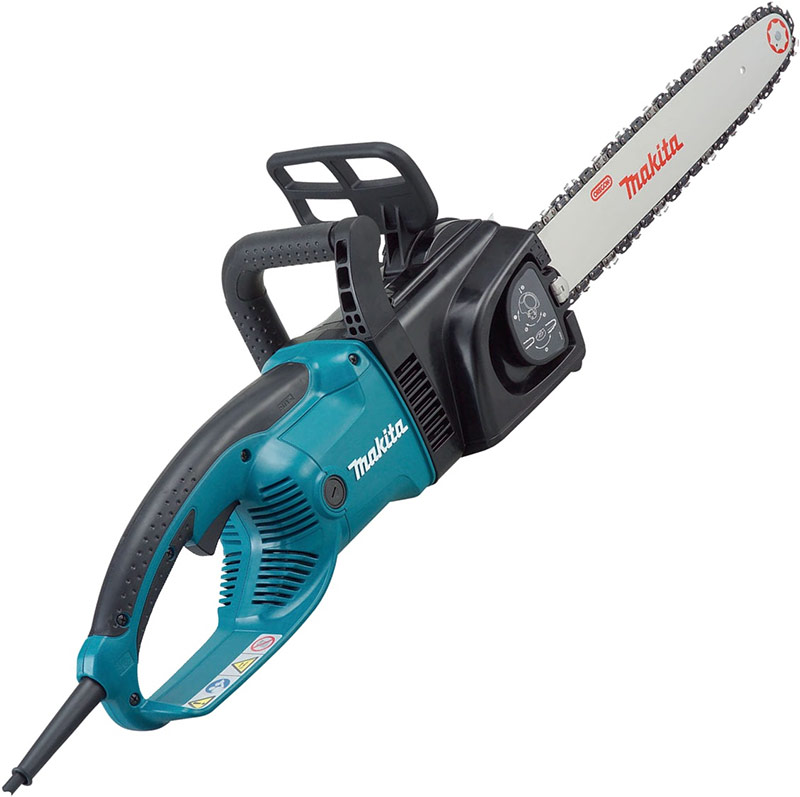
Cross saws are short, but the motor housing protruding to the left side upsets the balance and requires certain efforts by the operator to keep the tire in the cutting line. The effort is small, but with prolonged use increases the level of fatigue. The inconvenience of the cable in such saws is less felt.
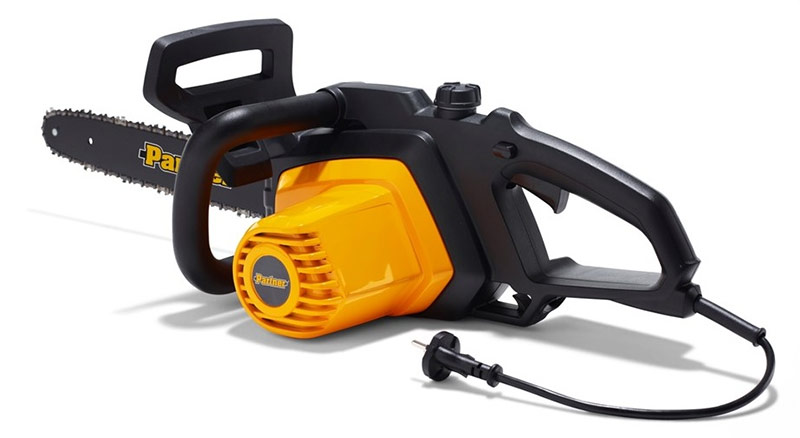
Security
In terms of safety, chainsaws are ahead of electric ones due to the lack of an electric cable, which you have to constantly pay attention to. In wet and rainy weather it is impossible to operate electric saws, as well as in damp rooms.
Regarding possible injury to the cutting part - the saws are absolutely identical, injury can only be obtained if the operating rules are grossly violated.
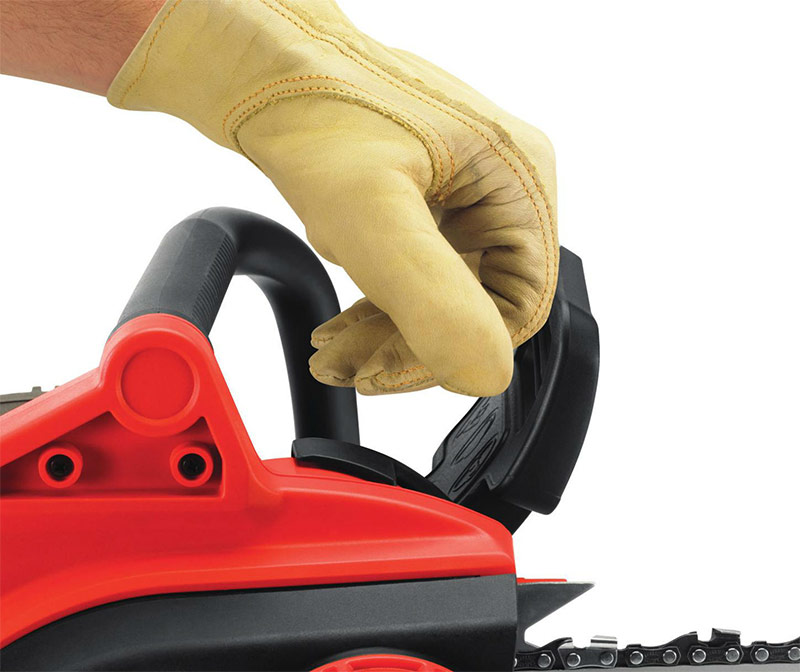
Lever to instantly stop the chain in the event of a kickback. They are equipped with both electric and gasoline chainsaws.
In the end, determining which is better than an electric or chainsaw is quite difficult. It all depends on the specific tasks and operating conditions. Judging by the prevalence and popularity of tools, both varieties of chainsaws have a right to life and do their job well. It is only important to buy a quality tool, not cheap fakes.
Suitability of using chain electric and gasoline saws in various conditions
To determine which saw is better than electric or benzo, it is possible only on the basis of the tasks that it will have to perform. When using a chain saw at home, when you need to saw a few logs or make blanks from boards, both options are about the same in terms of ease of use and performance.
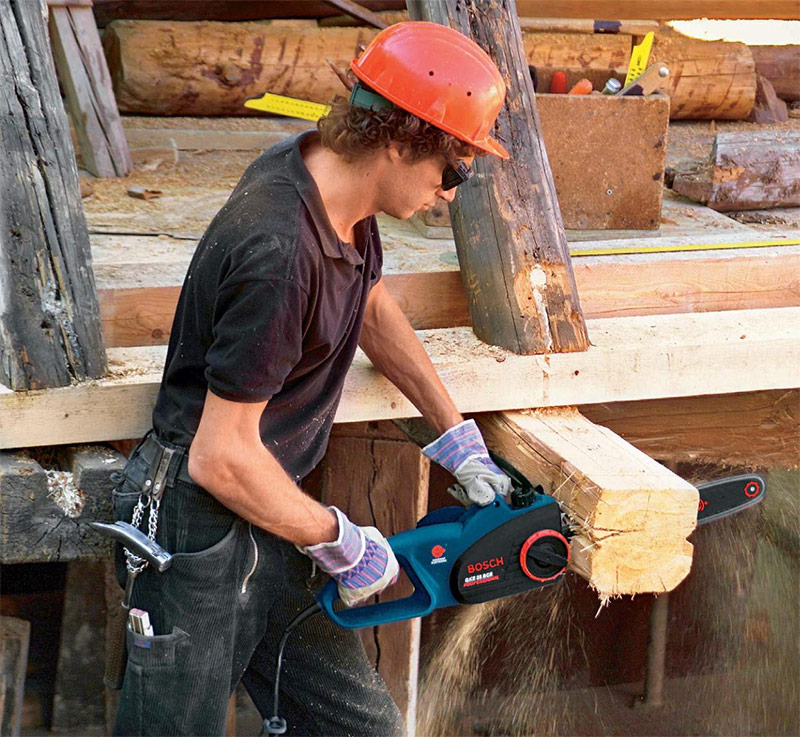
But if you have to cut a tree in the garden or clear a hedge, then a chainsaw is much more convenient. It is mobile, lightweight and works in any weather. The radius of use of the electric saw is limited by the length of the electric cable. In rainy weather or even with heavy dew, it is not safe to use it.
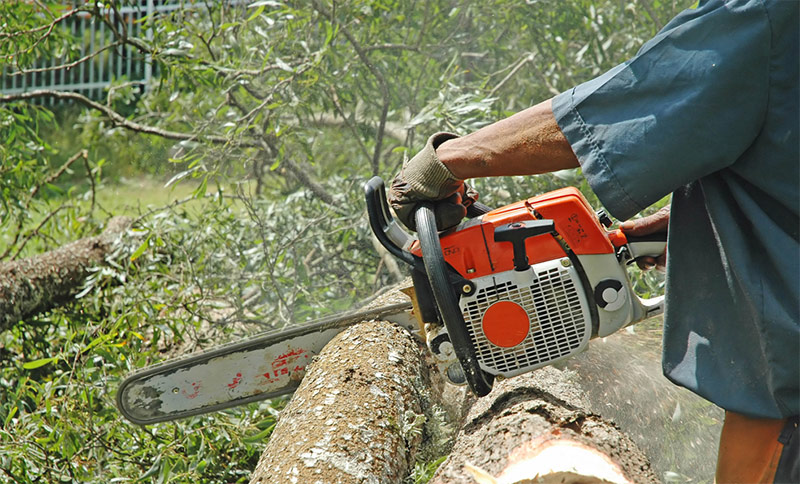
When working indoors, the palm should be given an electric saw if the work is done within one to two rooms. The absence of exhaust gases is a significant advantage, as is the noise level. If the sound from the operation of the electric saw rarely exceeds 75 dB, then the chainsaw even “idles” more than 80, and during operation - up to 100 - 105. On the street this is quite acceptable, but in an enclosed space it is very uncomfortable for both the sawyer and the people around him.
The vast majority of electric chain saws are made for domestic use. Their main purpose is to work in the garden and cottage area with small amounts of work, as well as during construction and carpentry.
Chainsaws are designed for frequent and prolonged use. They are able to work for a long time in almost any environment.
The final comparison of chain electric and gasoline saws
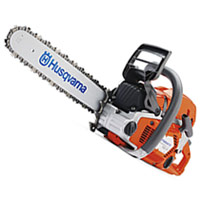 | 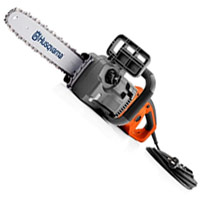 | |||||||
|---|---|---|---|---|---|---|---|---|
| Chainsaw | Chain saw | |||||||
 |
 |
|||||||
| Engine power, kW (hp) | 1,3 - 1,5 (1,7 - 6,8) | - | ||||||
| Power consumption kW | - | 1,6 - 2,2 | ||||||
| Weight, kg | 4,0 - 7,5 | 3,5 - 6,0 | ||||||
| Tire length cm | 30 - 100 | 30 - 45 | ||||||
| Chain brake | ||||||||
| Design | More complicated | Less complicated | ||||||
| Preparation for work | Difficult for beginners | Less complicated | ||||||
| Forest work | Great fit | Unsuitable | ||||||
| Work on construction sites and warehouses | Depends on conditions | Great fit | ||||||
| Work in the country | Great fit | Great fit | ||||||
| Work in small rooms | Unsuitable | Great fit | ||||||
| Service | More complicated | Less complicated | ||||||
| Durability | Depends on the quality of the tool and proper operation. | Depends on the quality of the tool and proper operation. | ||||||

